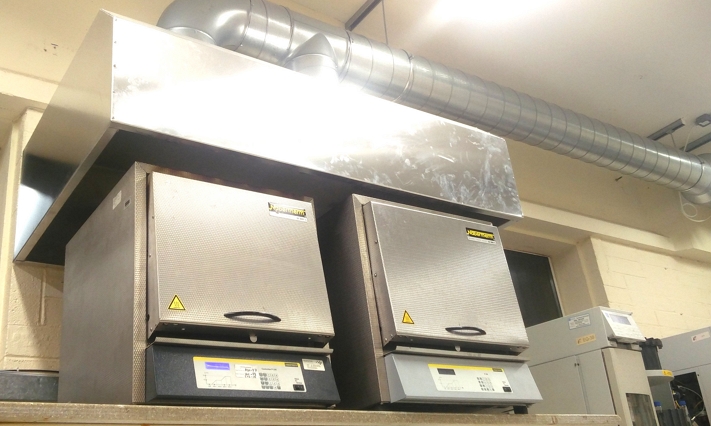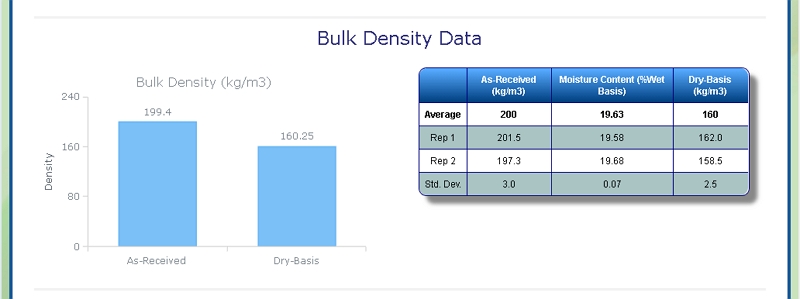Analysis of Torrefied Biomass
Background on Torrefied Biomass
Torrefaction will remove moisture and volatiles from the biomass, with the types of constituents that are removed, and their extent of removal, being dependent on the temperature used and the duration of the process.
Analysis of Torrefied Biomass at Celignis
Celignis Analytical can determine the following properties of Torrefied Biomass samples:
Lignocellulosic Properties of Torrefied Biomass
Cellulose Content of Torrefied Biomass
Click here to see the Celignis Analysis Packages that determine Cellulose Content
Request a QuoteCellulose Content
Hemicellulose Content of Torrefied Biomass
Click here to see the Celignis Analysis Packages that determine Hemicellulose Content
Request a QuoteHemicellulose Content
Lignin Content of Torrefied Biomass
Click here to see the Celignis Analysis Packages that determine Lignin Content
Request a QuoteLignin Content
Starch Content of Torrefied Biomass
Click here to see the Celignis Analysis Packages that determine Starch Content
Request a QuoteStarch Content
Uronic Acid Content of Torrefied Biomass
Click here to see the Celignis Analysis Packages that determine Uronic Acid Content
Request a QuoteUronic Acid Content
Enzymatic Hydrolysis of Torrefied Biomass
Click here to see the Celignis Analysis Packages that determine Enzymatic Hydrolysis
Request a QuoteEnzymatic Hydrolysis
Bioenergy Properties of Torrefied Biomass
Ash Content of Torrefied Biomass
Click here to see the Celignis Analysis Packages that determine Ash Content
Request a QuoteAsh Content
Heating (Calorific) Value of Torrefied Biomass
Click here to see the Celignis Analysis Packages that determine Heating (Calorific) Value
Request a QuoteHeating (Calorific) Value
Ash Melting Behaviour of Torrefied Biomass
Ash Shrinkage Starting Temperature (SST) - This occurs when the area of the test piece of Torrefied Biomass ash falls below 95% of the original test piece area.
Ash Deformation Temperature (DT) - The temperature at which the first signs of rounding of the edges of the test piece occurs due to melting.
Ash Hemisphere Temperature (HT) - When the test piece of Torrefied Biomass ash forms a hemisphere (i.e. the height becomes equal to half the base diameter).
Ash Flow Temperature (FT) - The temperature at which the Torrefied Biomass ash is spread out over the supporting tile in a layer, the height of which is half of the test piece at the hemisphere temperature.
Click here to see the Celignis Analysis Packages that determine Ash Melting Behaviour
Request a QuoteAsh Melting Behaviour
Major and Minor Elements in Torrefied Biomass
We can also determine the levels of 13 different minor elements (such as arsenic, copper, and zinc) that may be present in Torrefied Biomass.
Click here to see the Celignis Analysis Packages that determine Major and Minor Elements
Request a QuoteMajor and Minor Elements
Analysis of Torrefied Biomass for Anaerobic Digestion
Biomethane potential (BMP) of Torrefied Biomass
Click here to see the Celignis Analysis Packages that determine BMP
Request a QuoteBMP
Physical Properties of Torrefied Biomass
Bulk Density of Torrefied Biomass
At Celignis we can determine the bulk density of biomass samples, including Torrefied Biomass, according to ISO standard 17828 (2015). This method requires the biomass to be in an appropriate form (chips or powder) for density determination.
Click here to see the Celignis Analysis Packages that determine Bulk Density
Request a QuoteBulk Density
Particle Size of Torrefied Biomass
Click here to see the Celignis Analysis Packages that determine Particle Size
Request a QuoteParticle Size


















